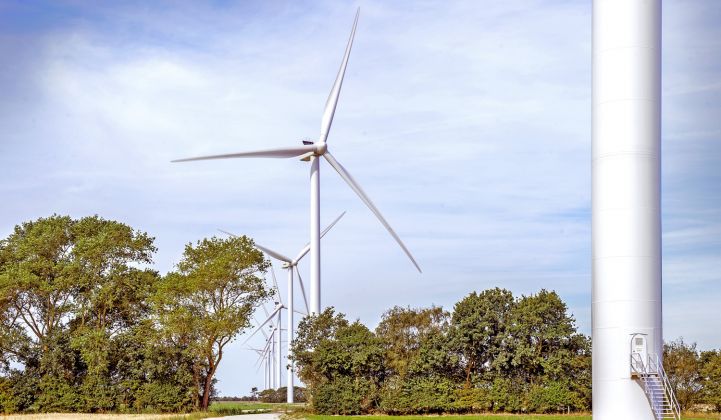European wind turbine manufacturers Siemens Gamesa and Vestas will cut a total of almost 1,200 jobs from manufacturing plants in Denmark and Germany, and there could be more job losses to come for the sector.
As existing production capacity in Europe becomes outdated and demand in the region slackens, there could be more layoffs ahead, said Shashi Barla, Wood Mackenzie’s principal analyst for global wind supply chain and technology.
"The global onshore market is expected to decline 8 to 10 percent in 2021-2022 compared to the peak in 2020," Barla said. "Turbine OEMs are gearing up with job cuts to address the challenges they will face two years down the line."
On Thursday, Siemens Gamesa released a press statement in Danish saying it was phasing out production of its direct-drive turbines in Brande and blades in Aalborg.
Andreas Nauen, the head of Siemens Gamesa Renewable Energy in Denmark, was quoted as saying: “We deeply regret to have to say goodbye to good and valued colleagues.”
On Friday morning, Vestas dealt the sector another blow. The world's largest wind turbine supplier will be cutting 590 “hourly-paid” employees, including 500 temporary or contract workers. The cuts are linked to the scaling down of V136 blade production at the Lauchhammer site in Germany and in Lem in Denmark. The company said it would be investing in other blade technology.
Jean-Marc Lechêne, executive VP and COO at Vestas, said: “We’re pleased that our new EnVentus and 4-megawatt platform solutions are very well received by our customers all over the world, but the resulting manufacturing changes mean we must unfortunately let go of good, hardworking colleagues.”
Vestas' EnVentus turbines will come equipped with blades as long as 162 meters. Taller towers and longer blades are key factors in the wind industry's continuing cost declines.
In addition to the shifting product portfolio, Vestas also acknowledged that cost was a factor.
“Today’s very competitive industry and the fast-moving energy transition means we must introduce new products and solutions where and when the market requires them. Our continued competitiveness in this environment means we must adjust our global manufacturing footprint to ensure we proactively manage our cost base and invest in new solutions to capture future growth,” said Lechêne.
In the second quarter of 2019, Vestas notched the highest quarterly order intake for a wind turbine supplier in history, at 5.7 gigawatts, as developers in the U.S. and China race to beat subsidy deadlines.
The European job losses are perhaps not a huge surprise. Barla pointed out that pressures on profitability, created by a string of very competitive bids for orders in 2017, is pushing supply chains toward the more cost-effective Asia-Pacific region.
"The high-cost manufacturing footprint in markets like Denmark and Germany will be scaled down," Barla said. "We have already seen this phenomenon across the supply chain to reduce manufacturing capacity in these markets."
However, Barla noted that the downsizing has been largely focused on onshore wind. He expects Europe's offshore supply chain to stay rooted to the big demand in Germany, Denmark and the U.K.
Siemens Gamesa has European manufacturing facilities in Spain, Germany, Denmark and the U.K. Earlier this month it announced a nacelle assembly plant in Taiwan, where it has several large offshore orders. In 2017 it opened a blade plant in Morocco.
Vestas’ European production is also centered in Denmark, Germany and Spain.




